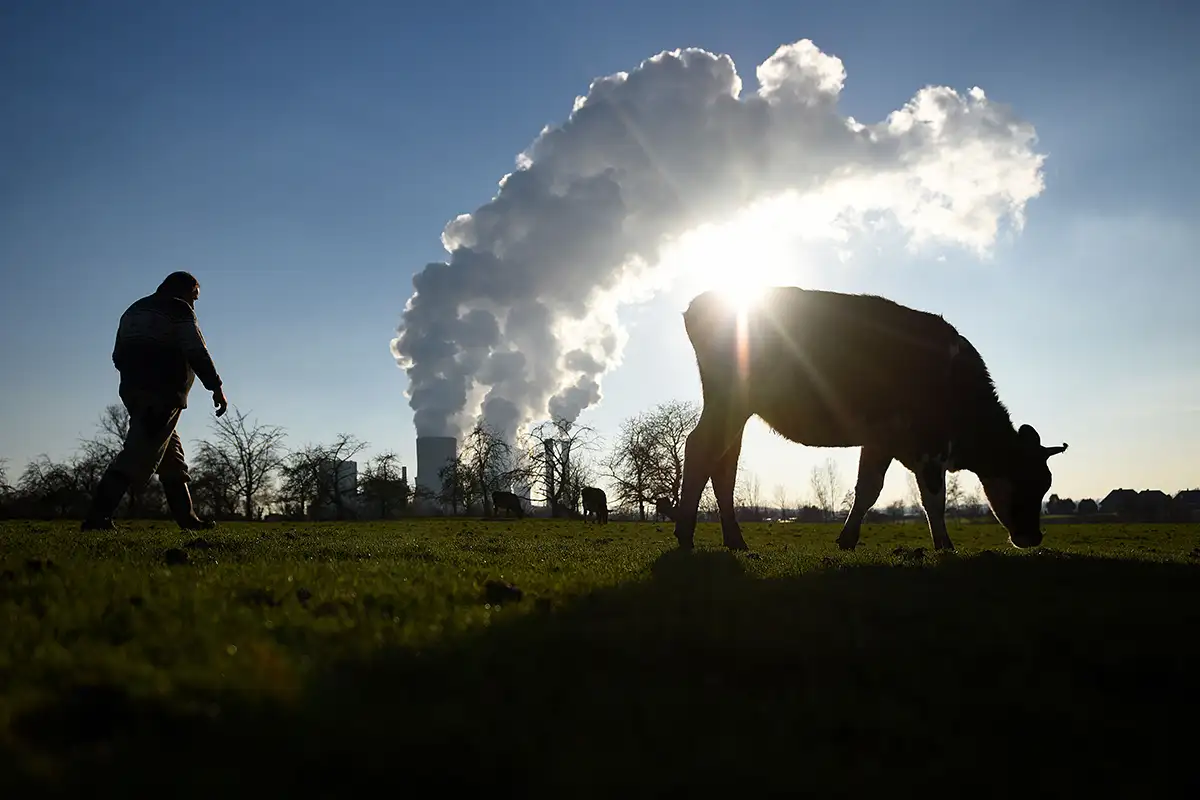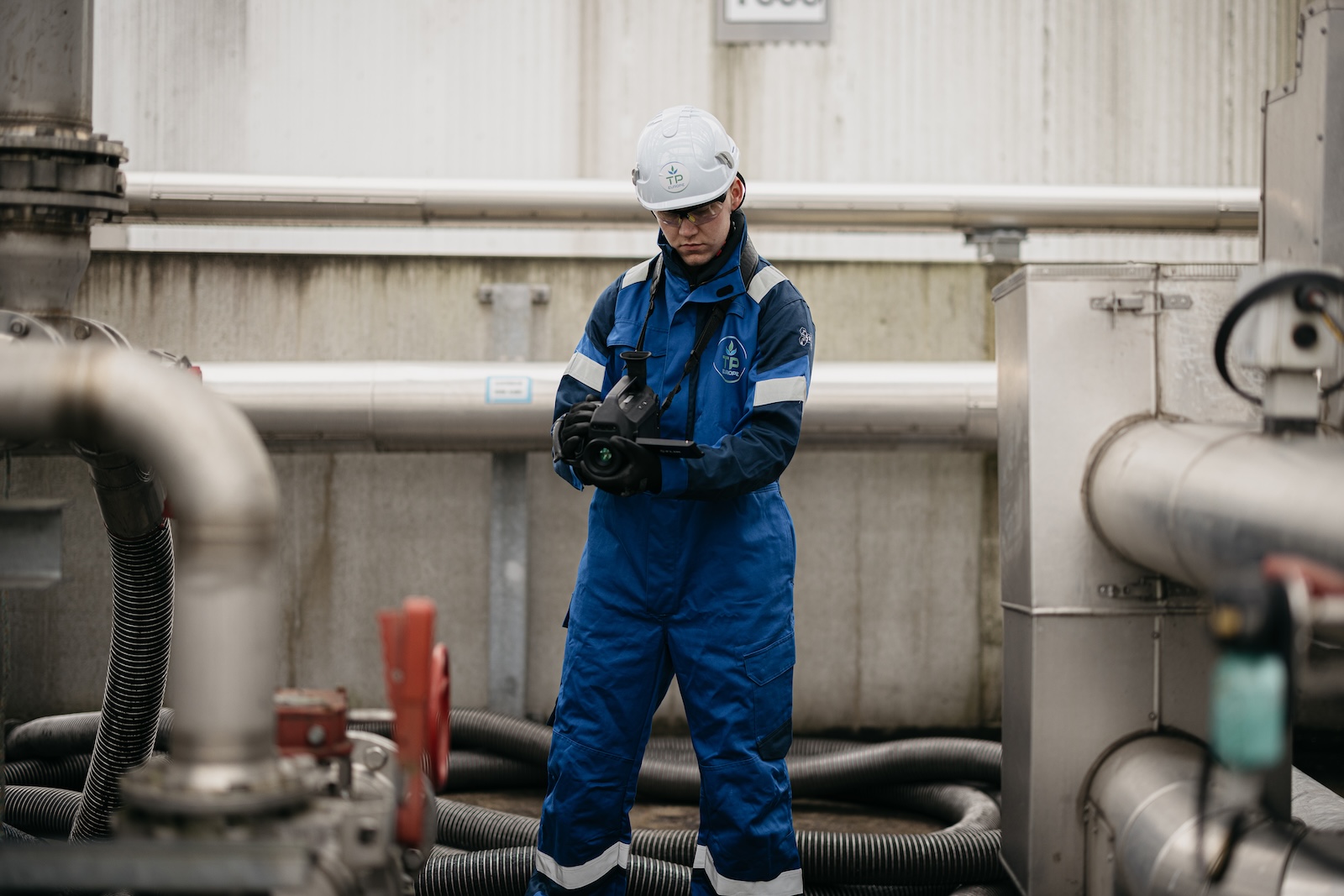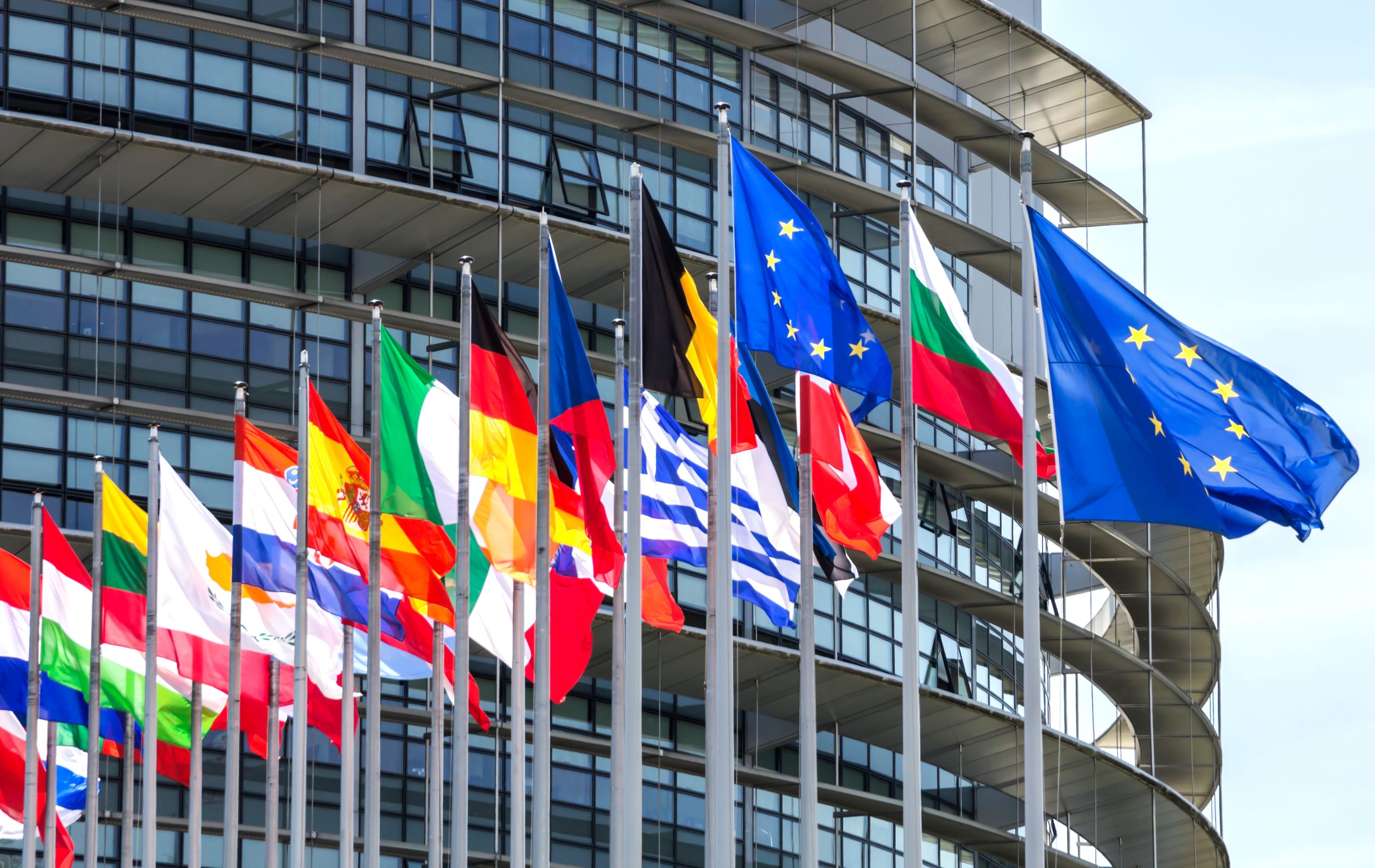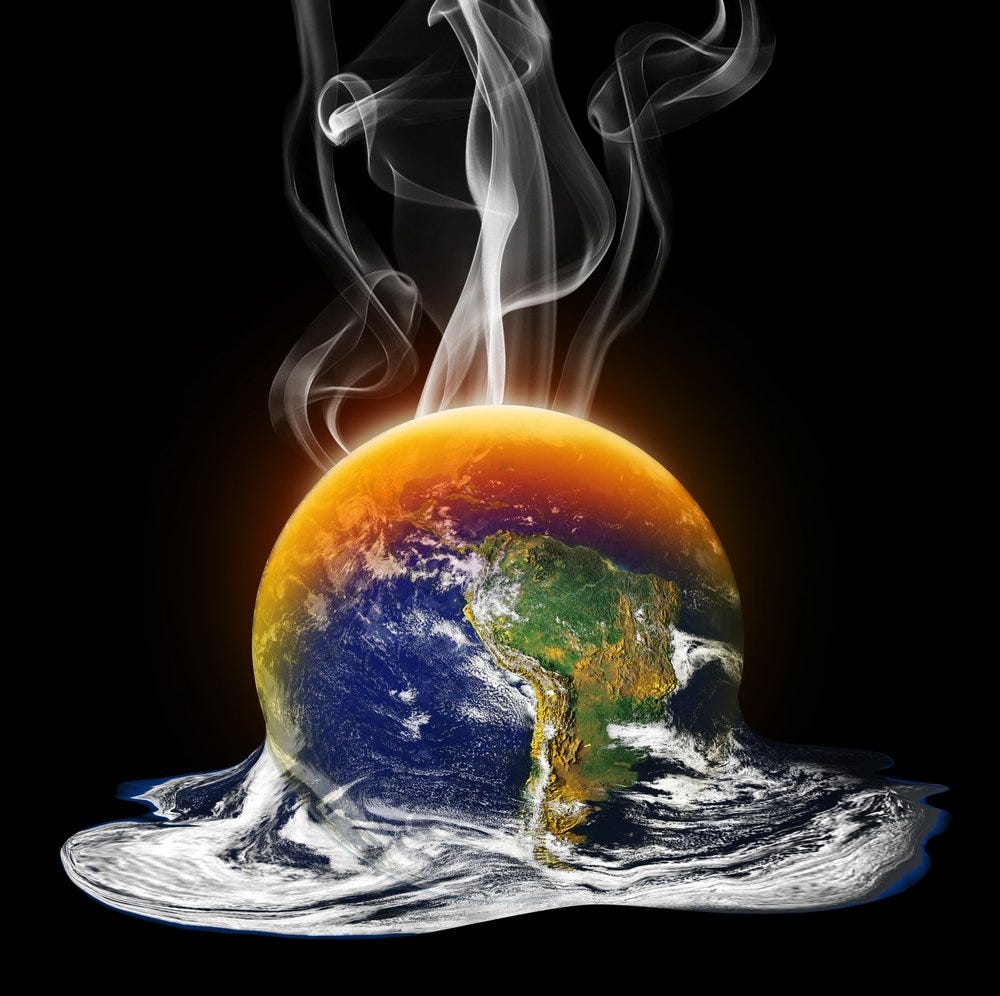Methane emissions are a critical yet often underestimated component of global warming. As the world grapples with the escalating crisis of climate change, understanding the role of methane—second only to carbon dioxide (CO2) in its contribution to atmospheric warming—is paramount. This article delves into the sources, potency, and implications of methane emissions, highlighting the urgent need for effective mitigation strategies.
What is methane?
Methane (CH4) is a potent greenhouse gas, comprising one carbon atom bonded to four hydrogen atoms. It’s a significant component of the Earth’s atmosphere, arising from both natural processes and human activities. The complexity of methane’s impact on global warming lies in its potent greenhouse effect, despite its relatively low concentration compared to CO2.
Anthropogenic vs. Natural Methane Emissions
Anthropogenic methane emissions:
- Origins: Fossil fuel extraction and agriculture.
- Characteristics: Result from human activities such as livestock farming, rice cultivation, and the production and transport of coal, oil, and natural gas.
Natural methane emissions:
- Origins: Wetlands, termites, and oceans.
- Characteristics: Emerge from natural processes without human intervention.
| Source |
Methane Contribution (%) |
| Natural Sources |
40% |
| Anthropogenic Sources |
60% |
This table underscores the significant human contribution to methane emissions, emphasizing the potential for impactful mitigation strategies.
The potency of methane in climate change
Methane is 84 times more effective than CO2 at trapping heat in the atmosphere over a 20-year period, making its role in climate change disproportionately large relative to its atmospheric concentration. Its short atmospheric lifespan of approximately 12 years, compared to centuries for CO2, means that actions taken to reduce methane emissions can have a rapid and significant effect on slowing global warming.
- Global Warming Potential (GWP): Methane’s GWP is a measure of its heat-trapping ability over a specific period, typically 20 or 100 years, compared to CO2.
- Atmospheric Lifespan: Short-lived, but with a strong immediate impact on global temperature.
Understanding the potent warming effect of methane is crucial for prioritizing reduction efforts, particularly in sectors where methane release is significant and preventable.
Lifespan of methane in the atmosphere
Methane’s impact on the climate is both potent and relatively short-lived. Once released into the atmosphere, methane remains active for about 12 years—a stark contrast to carbon dioxide’s centuries-long lifespan. This shorter atmospheric duration means that methane drives rapid changes in global temperatures, contributing significantly to short-term global warming. However, this also implies that efforts to reduce methane emissions can yield quicker benefits for climate stabilization.
- Rapid Decomposition: Methane undergoes a series of chemical reactions in the atmosphere, eventually converting to CO2 and water vapor.
- Immediate Impact: Its short lifespan amplifies its warming effect, making immediate reduction efforts crucial.
Major sources of anthropogenic methane emissions

Anthropogenic, or human-caused, methane emissions account for approximately 60% of all methane released into the atmosphere. These emissions primarily come from three sectors: energy, agriculture, and waste management. Each sector presents unique challenges and opportunities for methane mitigation.
Energy sector’s role in methane emissions
The energy sector is a significant source of methane emissions, primarily through the extraction, transportation, and processing of fossil fuels. Natural gas, which is predominantly methane, leaks from oil and gas wells, pipelines, and other infrastructure.
- Extraction and Production: Leakage from oil and gas wells.
- Transportation: Emissions from pipeline leaks.
- Processing and Distribution: Venting and flaring of natural gas.
Strategies for reduction:
- Improving leak detection and repair (LDAR) programs.
- Implementing technologies to capture methane before it is vented or flared.
Agricultural contributions to methane emissions
Agriculture contributes to methane emissions through enteric fermentation in ruminants, rice paddies, and manure management practices. Livestock, such as cows and sheep, produce methane during digestion, while rice paddies provide anaerobic conditions conducive to methane-producing bacteria.
- Enteric Fermentation: Methane produced by livestock during digestion.
- Rice Cultivation: Methane emissions from flooded rice fields.
- Manure Management: Methane generation from manure storage and treatment.
Mitigation approaches:
- Dietary supplements for livestock to reduce enteric fermentation.
- Water management in rice paddies to minimize anaerobic conditions.
- Improved manure management techniques, such as composting and anaerobic digestion.
Waste management and methane emissions
Landfills are a notable source of methane emissions due to the decomposition of organic waste under anaerobic conditions. Waste management practices, such as landfilling and wastewater treatment, contribute to the anthropogenic methane budget.
- Organic Waste Decomposition: Methane generated from the breakdown of organic material in landfills.
- Wastewater Treatment: Methane emissions during the treatment of sewage and industrial wastewater.
Emission reduction techniques:
- Capturing landfill gas for energy use.
- Implementing aerobic waste treatment processes to reduce methane production.
Health and environmental impacts of methane
Methane’s influence extends beyond global warming, affecting both environmental stability and human health. As a potent greenhouse gas, methane contributes significantly to the greenhouse effect, exacerbating climate change and its associated environmental impacts, including extreme weather events, loss of biodiversity, and habitat destruction.
Environmental impacts:
- Climate Change Acceleration: Methane’s high global warming potential accelerates climate change, leading to rising sea levels, altered rainfall patterns, and increased frequency of extreme weather events.
- Air Quality Degradation: Methane is a precursor to ground-level ozone, a harmful air pollutant. Increased levels of ozone can damage crops, forests, and other vegetation, and reduce air quality, affecting both ecosystems and human health.
Health impacts:
- Respiratory Issues: Exposure to elevated levels of ozone can lead to respiratory problems, such as asthma, bronchitis, and other chronic lung diseases.
- Public Health Risks: Poor air quality, exacerbated by ozone and particulate matter resulting from methane emissions, can lead to increased mortality and morbidity rates.
Reducing methane emissions: strategies and technologies
Addressing methane emissions is a critical component of global efforts to combat climate change. A combination of policy measures, technological innovation, and changes in practice across key sectors can significantly reduce methane’s impact on the atmosphere.
The role of existing technologies
Current technologies offer feasible solutions for capturing and reducing methane emissions across various sectors. The adoption of these technologies not only mitigates environmental and health impacts but also presents economic benefits by improving efficiency and reducing waste.
Key technologies include:
- Leak Detection and Repair (LDAR): Advanced sensing technologies can identify and quantify methane leaks from oil and gas infrastructure, allowing for timely repairs.

- Gas Capture Systems: Technologies that capture methane from landfills and livestock manure can convert it into energy, reducing emissions while generating renewable energy.
- Anaerobic Digestion: This process breaks down organic waste in the absence of oxygen, capturing methane for use as biogas, a renewable energy source.
Innovations in methane reduction
Innovation in technology and practices is paving the way for new methods to reduce methane emissions. These advancements promise more efficient, cost-effective solutions that can be adopted on a larger scale.
Emerging innovations:
- Satellite Monitoring: Space-based technologies offer global monitoring of methane emissions, identifying super-emitters and pinpointing areas for targeted mitigation efforts.
- Enhanced Biogas Utilization: Improvements in biogas purification and conversion technologies enable more widespread use of this renewable energy source, reducing reliance on fossil fuels.
- Feed Additives for Livestock: Research into dietary supplements for ruminants aims to reduce enteric fermentation, a major source of agricultural methane.
Table: Comparison of methane reduction technologies
| Technology |
Sector |
Reduction Potential |
| Leak Detection and Repair |
Oil and Gas |
High |
| Gas Capture Systems |
Waste Management |
Moderate to High |
| Anaerobic Digestion |
Agriculture |
Moderate |
| Satellite Monitoring |
General |
High |
| Feed Additives |
Agriculture |
Moderate to High |
EU’s approach to methane emissions
The European Union (EU) has taken a proactive stance on mitigating methane emissions as part of its broader strategy to combat climate change and move towards sustainability. Recognizing the significant impact of methane on global warming, the EU has developed a comprehensive approach that includes legislation, technology, and international cooperation.
Methane strategy and regulations
In response to the urgent need to address methane’s role in climate change, the EU has implemented a Methane Strategy that outlines a framework for reducing emissions across key sectors, including energy, agriculture, and waste management.
Key components of the EU methane strategy:
- Legislation: Introduction of regulations to monitor, report, and verify methane emissions, aiming to significantly reduce methane output in the energy sector by targeting leaks, venting, and flaring.
- Technology Deployment: Support for the development and adoption of technologies to detect and reduce methane emissions, including satellite monitoring and improved gas capture systems.
- Sector-Specific Actions: Tailored strategies for agriculture and waste management to minimize methane release through improved practices and innovation.
EU’s global leadership in methane reduction
The EU has positioned itself as a global leader in the fight against methane emissions, spearheading initiatives and partnerships aimed at fostering international collaboration.
Global initiatives led by the EU:
- The Global Methane Pledge: Co-convened with the United States, this pledge commits signatory countries to reducing global methane emissions by at least 30% from 2020 levels by 2030.
- International Partnerships: Collaboration with countries and regions worldwide to share knowledge, technologies, and strategies for methane reduction.
- Funding and Support: Allocation of resources to support methane monitoring and reduction efforts globally, including the development of international reporting standards.
The Global Methane Pledge and International Cooperation
The Global Methane Pledge represents a significant step forward in international efforts to address methane emissions, highlighting the importance of global cooperation in tackling climate change.

Key aspects of the global methane pledge:
- Broad Participation: Over 100 countries have joined the pledge, demonstrating widespread recognition of methane’s impact on the climate.
- Focus on Action: Commitments to develop and implement national methane action plans, enhancing the global response to methane reduction.
- Support for Innovation: Encouragement of technological advancement and data sharing to improve methane detection and mitigation strategies worldwide.
Table: EU initiatives for global methane reduction
| Initiative |
Description |
Impact |
| Methane Strategy |
Framework for reducing EU methane emissions |
Direct reduction in key sectors |
| Global Methane Pledge |
International commitment to cut methane emissions |
Encourages global action and cooperation |
| International Partnerships |
Collaboration with global partners on methane |
Enhances global methane reduction efforts |
Global methane actions and achievements
The international community has made significant strides in addressing methane emissions, with numerous countries and organizations launching initiatives to detect, report, and reduce methane. These efforts are crucial for meeting global climate goals and mitigating the rapid effects of climate change.
Notable achievements include:
- Implementation of the Global Methane Pledge: Over 100 countries committing to a collective goal significantly boosts the global effort to reduce methane emissions.
- Advancements in Monitoring Technologies: Satellite technology and ground-based sensors have improved our ability to detect methane leaks and identify super-emitters.
- Sector-Specific Strategies: From the oil and gas industry’s efforts to reduce flaring and venting to agriculture’s adoption of feed additives that lower enteric fermentation in livestock, targeted strategies are making an impact.
Conclusion
Methane emissions pose a significant challenge in the fight against climate change, but they also offer one of the most effective levers for rapid climate action. By addressing methane emissions through technology, policy, and international cooperation, it is possible to significantly slow the rate of global warming in the near term. The efforts of the EU and the global community through initiatives like the Global Methane Pledge illustrate a commitment to this urgent environmental issue. Continued innovation, collaboration, and implementation of methane reduction strategies will be critical to achieving these goals.
FAQs on Methane Emissions
Q1: What is methane and why is it important?
A1: Methane (CH4) is a potent greenhouse gas that contributes significantly to global warming. Although it has a shorter atmospheric lifespan than CO2, its ability to trap heat is much stronger in the short term.
Q2: How are human activities contributing to methane emissions?
A2: Human activities, including fossil fuel extraction, agriculture (especially livestock and rice production), and waste management, are the main sources of anthropogenic methane emissions.
Q3: What are the main strategies for reducing methane emissions?
A3: Key strategies include improving the detection and repair of leaks in the fossil fuel industry, adopting sustainable agricultural practices, managing waste more effectively, and utilizing methane capture technologies.
Q4: How effective are current technologies in detecting and reducing methane emissions?
A4: Current technologies, such as infrared cameras and satellite monitoring, are highly effective at detecting methane leaks. Technologies for reducing emissions, such as gas capture systems and anaerobic digesters, are also proving effective across various sectors.
Q5: What role does international cooperation play in reducing methane emissions?
A5: International cooperation is crucial for sharing best practices, technologies, and strategies for methane reduction. Initiatives like the Global Methane Pledge facilitate collective action and accountability among nations.






